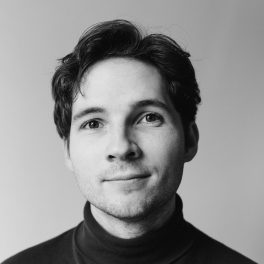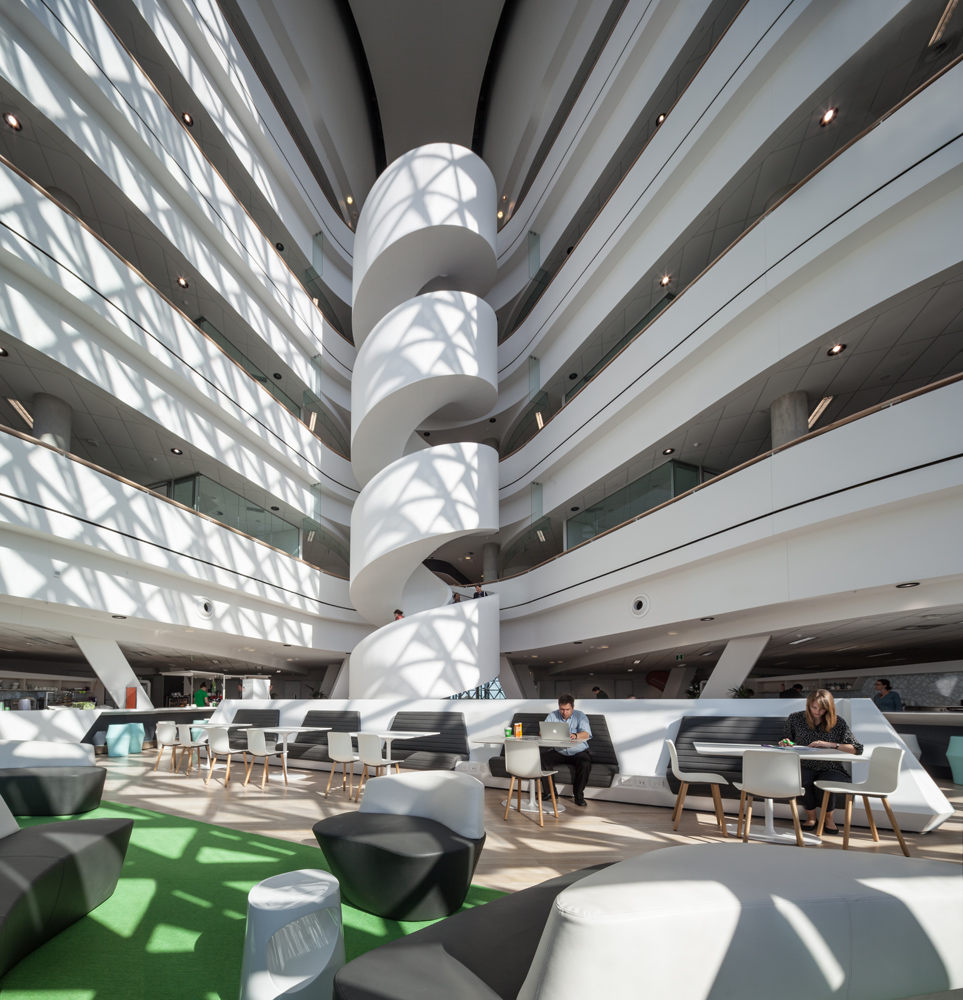
Walter Marsh
Walter is a writer and editor living on Kaurna Country.

Grand Designs presenter Kevin McCloud has spent 20 years bringing ambitious, innovative and sometimes bewildering houses into the homes of viewers. Ahead of his first visit to Adelaide, many of McCloud’s observations already resonate with the challenges facing our city.
“I’ve never been to Adelaide, so it’s very exciting,” McCloud tells The Adelaide Review, before quickly citing several local examples of “quite funky architecture” that have already drawn his attention.
“There’s some interesting contemporary shapes, some very large ones in Adelaide now,” he says. “There’s that big one, the SAHMRI. Curved… it’s almost like a lizard’s skin, it twinkles. I think those big iconic things are important, they kind of help brand a city, but I remember I saw a photograph of a house in Adelaide that was the exact opposite of the SAHMRI, one of the finest houses I’ve ever seen, a beautiful, beautiful wooden building built in an alleyway.”
Leigh Street’s Pink Moon Saloon? “Is that what it’s called, Pink Moon Saloon? Yeah that’s right, it’s got a timber front and a glass back, just a lovely little thing.”
Squeezed into what was once a narrow west end laneway, the award-winning small bar recalls a classic sub-genre of Grand Designs builds: those tiny-but-audacious projects that turn an under-utilised patch of real estate into an inventive bit of urban infill. It’s these kinds of projects, McCloud says, that are just as important as multimillion-dollar statements.
“What I mean there is that you need everything in a city for the architectural scale to work; you need the layout, and you need big scale works, but you also need the small little modest stuff which can still be of good quality, doesn’t need to be mediocre. It’s important to have architecture that doesn’t shout, as much as architecture that does.”

It’s this mix, McCloud says, that is one of the great public responsibilities of architects and planners. “We’re all expecting or looking for that big cathedral, or whatever it is, but at the same time architecture is not just about what things look like. Architecture is about the organisation of space for human beings, and the best thing about our homes is the interior; it’s the arrangement of spaces, it’s not the impact on the streets. That can be exciting, but for most of us in our homes and the buildings we work in and use, the interior of spaces can be much more exciting.”
While the much-publicised troubles of McCloud’s UK-based eco-development companies have invited inevitable comparisons to the occasional disasters captured on Grand Designs, McCloud’s faith in the value of sustainable, environmentally aware architecture is undeterred. The key, McCloud says, lies in finding simple ways to integrate humans with their environment – rather than fighting it. “Increasingly architects and engineers are becoming aware – too slow but it’s happening – of the need for what I would call natural design or environmental design, which takes advantage of natural phenomena,” he says.
“So a simple thing is to design houses with, instead of air-conditioning and sealed windows, vents: a vent at a low level, and a vent at a high level. Then, at summer. you open a vent at the high level and the warm air rises through the building and it sucks in cool air in the bottom, and purges and provides fresh air into the building. These are very simple devices that not only human beings, but species like termites, have understood for millions of years.
“The whole idea of the covered porch, the stoop that wraps around the building which provides you with a walkway, a covered place to sit in all weathers that also keeps the sun off the building, keeps the walls and structure from overheating,” he explains.
They’re also, of course, principles that are evident in many of the remaining 19th century buildings and homes that once defined Adelaide’s architectural character. “It’s very elementary and simple but what do we do now? We put up steel-framed, concrete buildings and clad them in glass, wait for the sun to heat them up to a point where they’re intolerable and then put air conditioning in to cool them down again.
“I occasionally see a skyscraper with really clever solar shading on it, but not very often. I look at them and wonder how the heck you could manage that kind of building? And the answer is, you bung a lot of energy in it. You can put your glass box wherever you want on the planet, put it into the middle of a desert, or on top of a mountain in snow, and once you put enough energy into it you can keep it at the right temperature.”

While McCloud praises a growing movement towards conscientious, sustainable architecture in countries like Australia – likening it to the mainstream embrace of organic food – he says that adaptation and resilience are also essential. In this context, it’s no surprise that McCloud lent his support last year to the ultimately unsuccessful campaign to prevent the demolition of Shed 26 at Port Adelaide.
“It’s fundamentally important of course that we try first of all to build responsibly, and that of course means building with materials that are renewable, that don’t damage the planet in their manufacture which are recyclable as much as possible,” he says. “But it’s also really, super important to build resiliently, so that buildings can be adapted, and not knocked down and reused, and [are] well-built and last long, and serve us really promptly.
“That idea of adaptability is really fundamental I think for two reasons. One, it provides us with long life buildings with therefore minimal environmental impact because they’re around for a long time. But secondly, when buildings are good and look after us and are adaptable, they become powerful in our memory and part of our culture. Great buildings from the 1960s are as important to us as ones from the 16th century and 19th century; it’s fundamental that we respect the value of history. Unless we know where we’ve been it’s really hard to know where we’re going.
“Otherwise the world becomes strange – we stop understanding.”


Walter is a writer and editor living on Kaurna Country.